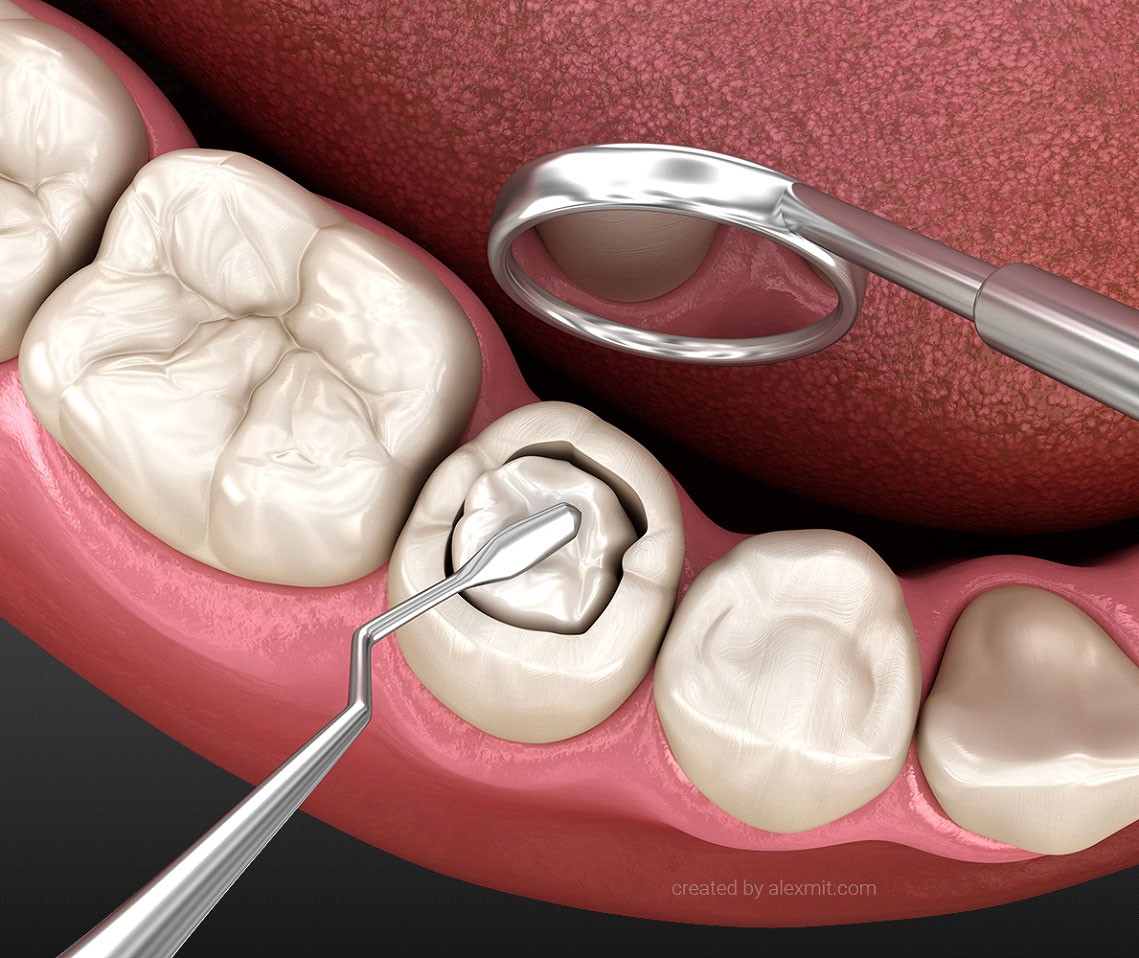
Restoration of a tooth with the help of composite materials refers to direct methods of restoration. This means that the doctor performs the work of restoring teeth directly in the patient's mouth. This method assumes that the material used is a composite. This is a high molecular weight chemical compound called a polymer.
Composites of the latest generation have unique characteristics:
- Have increased mechanical strength;
- Aesthetic appearance.
- Resistance to abrasion;
- The identity of the thermal expansion coefficient to the similar coefficient of dental tissues;
- Increased wear resistance;
Modern dentistry can offer many ways to restore teeth - fillings, crowns, inlays, veneers. In this section, we will tell you more about the composite restoration of teeth (light fillings and artistic restoration of teeth).
Stages of restoration of teeth with composite materials:
- conducting preliminary diagnostic studies of tooth tissues to be restored;
- cleaning teeth from plaque and stones. It is necessary that the reconstructed element be identical in color to the natural shade of the patient's enamel;
- selection of the shade of the composite material using a special color scale;
- preparation for restoration. The stage may differ in different clinical situations. The manipulations carried out depend on the degree of destruction (if any). In case of any destruction, preparation is carried out, the destruction of destroyed tissues is removed, and old fillings are also removed;
- the restoration procedure itself: the doctor applies the composite of the selected shade in layers and polymerizes it in the same layer with a special lamp. With the help of dental instruments, the tooth is given the correct anatomical shape;
- the final stage is grinding and polishing.
Advantages and disadvantages of dental restoration with composite materials:
Modern composite restoration has the following advantages:
- performance of restoration work without turning the tissues of adjacent elements (in contrast to the process of installing ceramic microprostheses);
- there is no need to perform the depulpation procedure;
- the minimum time spent on the restoration of one tooth is performed in one session;
- relatively low price.
There are also some disadvantages:
- shorter service life than ceramic veneers / crowns, both in terms of strength and aesthetic indicators;
- The loss of gloss and “presentation” of composite restorations begins 2-3 years after their installation (for example, veneers remain in their original form for the entire service life).
- the possibility of secondary caries due to leaky fit of composite materials to dental tissues.
- If more than 1/2 of the tooth crown is destroyed, restoration with a composite material is not recommended. Large fillings are not able to redistribute the load on the tooth, as a result of which it is chipped, or more often, the wall of your tooth is chipped, which can lead to its loss.
Despite some drawbacks, restoration of teeth with composites, if indicated, is a worthy alternative to standard prosthetics.






